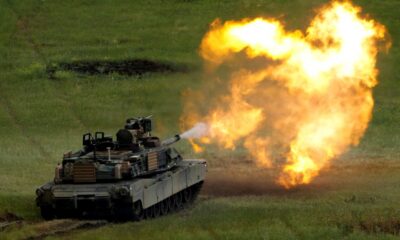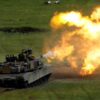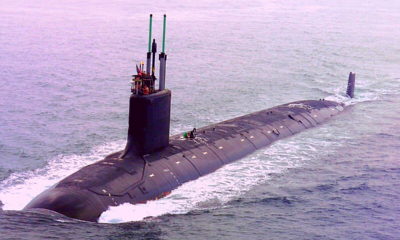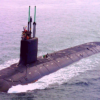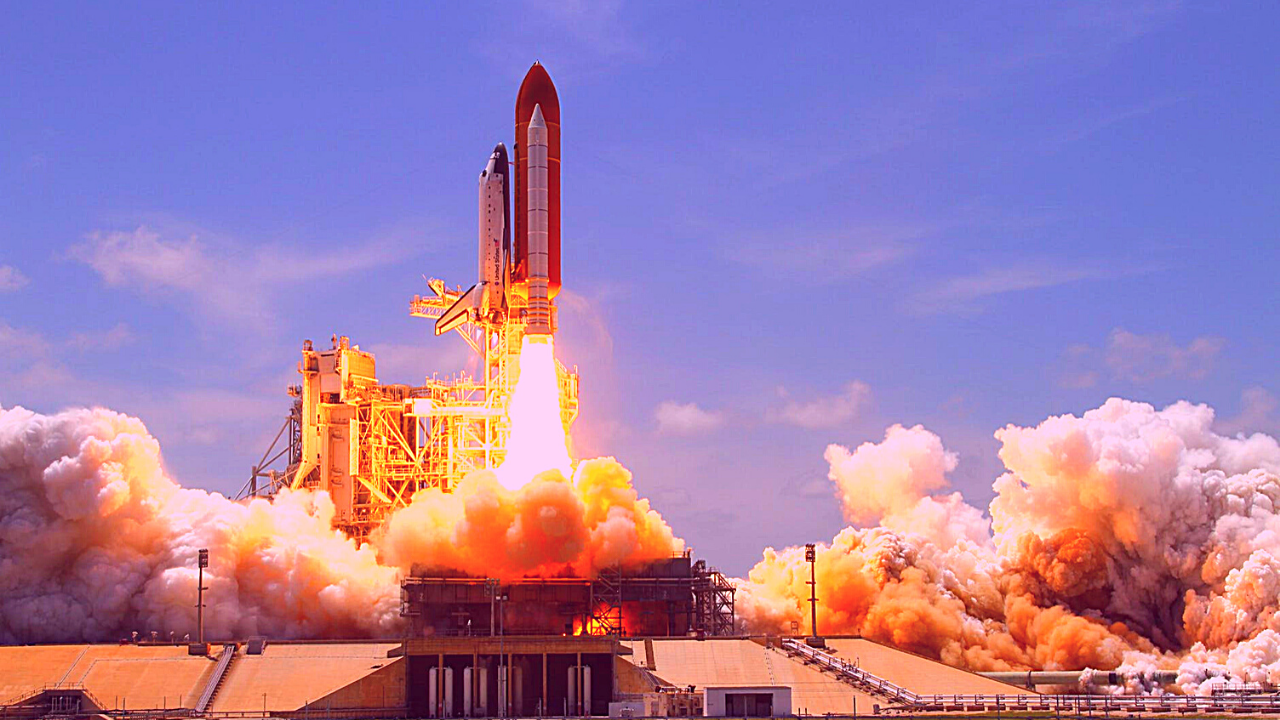
Technology
10 Biggest Rockets Ever Launched
We have seen rockets take off on news channels and in several movies. With massive fire thrusting them up into the sky, they look beyond spectacular and soon vanish into outer space.
Rockets are extremely powerful jet engines that are designed specifically to carry people and other research material into space. It is a common misconception that rockets move forward in space by pushing back the air. However, this misconception is easily understood when we realize that there is no air in space.
What actually happens is that the rockets produce thrust by burning fuel and then this fuel is then turned into a hot gas. Now when this gas is pushed out from the rocket’s engine, the rocket moves forward.
When Were Rockets Invented?
Rockets were first used in China in the 1200s and they were mainly used for fireworks. The army also used these rockets during wars. Even in the 1300s, these rockets were used for the same purposes in Asia and Europe. However, in the next few years, much bigger rockets were developed and used.
10. Space Shuttle
Height: 184.2 feet
Diameter: 28.5 feet
Mass: 4,470,000 lb
The Space Shuttle rocket designed by NASA was the world’s first reusable spacecraft. This rocket took off from earth like a rocket and returned to earth like a glider. The rocket was designed to carry huge materials like satellites.
This rocket was designed to fly back into space almost 100 times and it was expected to reduce the huge costs of spaceflight into low earth orbit.
The first space shuttle that ook off from earth was launched in 1981 and subsequently, the last one to take off launched in 2011.
At liftoff, this huge rocket weighed 2 million kilograms and measured 184 feet in height.
9. Atlas V
Height: 191.27 feet
Diameter: 12.5 feet
Mass: 737,400 lb
Fifth version of the Atlas rocket family, this rocket was an expendable launch system. Initially designed by Lockheed Martin, it is now run by the United launch Alliance, which is a joint venture between Lockheed and Boeing.
This rocket is equipped with five rocket boosters and can be customized according to needs for a single or dual-engine configuration. Besides, thermally stable kerosene fuel and liquid oxygen are also loaded into the Atlas V rocket.
Each of these rockets has two stages. In the first stage, the engine is run and powered by kerosene and liquid oxygen while in the second and upper stage, it is powered by burning liquid hydrogen and liquid oxygen.
8. Ariane 4
Height: 192.65 feet
Diameter: 12.5 feet
Mass: 529,110-1,036,175 lb
Debuted in 1988, the Ariane 4 has been the world’s most dominant commercial space launch vehicle. This rocket retired in 2003 and during its tenure, it flew in six different configurations.
Powered by the Viking series engines, this rocket was developed by France in the 1970s. Even during that time, these rockets produced 77,000 kgf thrust!
Ariane 4 has been popularly known as the workhorse of the Ariane family. From its launch in 1988 till its retirement in 2003, this rocket has made a whopping 113 launches. The main aim of this rocket was to observe satellites and do scientific research.
During its time, this rocket had captured 50% of the market in the launch of commercial satellites.
7. Delta IV Medium
Height: 205.5 feet
Diameter: 16 feet
Mass: 891,990 lb
The Delta IV Medium rocket was launched in the early 2000s. It was a group of five launch systems and was designed by Boeing’s Defense, Space and Security division. Later this rocket became a product of the United Launch Alliance in 2006.
Belonging to the Delta rocket family, this rocket has a 5-meter diameter. The 29th flight of this rocket was also its last that took off in 2019. It took off from Florida and the name of the mission was Magellan. This mission was named after a 16th-century Portuguese explorer who circumnavigated the earth in a single voyage for the very first time.
6. Angara-A5
Height: 210 feet
Diameter: 29.1 feet
Mass: 1,740,000 lb
The Angara-5 rocket was designed for the Russian Ministry of Defense to carry satellites. It comprised all the main components of the latest Russian technology and could carry rockets of upto 37.5 tonnes.
As compared to Proton rocket that could carry a payload of upto 22 tonnes, the Angara-5 could carry a payload of 24.5 tonnes. These rockets are considered to be the next-generation Russian space rockets as they make use of highly environment-friendly propellant components.
Till date, this rocket has made only two launches, one happened in July 2014 and the other in December 2014. only two launches of this rocket
5. Falcon Heavy
Height: 230 feet
Diameter: 12 feet
Mass: 3,132,301 lb
Considered to be one of the most powerful operational rocket in the world, the Falcon Heavy rocket can lift weights of upto 64 metric tons into outer space.
This rocket consists of three falcon nine-engine cores, which while working together, produce a thrust of five million pounds!
With such massive payload capacity, this rocket equals the thrust of 18 747 aircraft at full power! This incredible rocket is also capable of lifting a fully loaded 737 jetliner, with passengers, luggage, and fuel!
4. Delta IV Heavy
Height: 236 feet
Diameter: 16 feet
Mass: 1,616,000 lb
The Delta IV Heavy rocket was one of the mightiest rockets that was supposed to be launched by the United Launch Alliance in 2020. This rocket was supposed to carry a satellite with it for the National Reconnaissance Office.
However, due to some technical issues, this rocket could not take off and videos from during its launch time at the pad showed that the engine had exhausted, which eventually led to its shutdown.
This rocket was the last of its generation that was to take off and now the company is preparing to roll out another family of rockets, ie, the Vulcan Centaur.
3. Ares I-X
Height: 309 feet
Diameter: 18 feet
Max. Thrust: 3,372,134 lbf
The NASA astronauts, in 2004, were tasked with returning to the moon and go onto Mars. This task required the development of a new launch architecture system. This idea was part of the Vision of Space Exploration.
To tackle this, after as many as five years later, the Ares I-X rocket was developed and its first flight took off unmanned. This flight became NASA’s great step and was called the Constellation Program.
The take-off of this rocket got delayed by a day due to uncertain weather conditions and when it finally launched the following day, its success was grandly celebrated. While on Mars, this rocket achieved all its objectives and answered very valuable questions.
2. N1
Height: 344 feet
Diameter: 55.8 feet
Mass: 6,060,000 lb
Also known as H1 in Russian, this was a super heavy-lift rocket whose primary task was to deliver payloads beyond low earth orbit. Initially, it was proposed that this rocket would carry out various military and scientific tasks, which included space station launches, expeditions to the moon, and even carry humans to Mars on specific missions.
After being approved by the kremlin, the main task assigned to it was to beat America to the moon. This mammoth rocket weighed a massive 6,000,000 pounds when fueled fully and stood tall at 344 feet. To be able to lift this heavy-weight rocket, 10,000,000 pounds of thrust was required and so 30 small rocket engines, all firing together, were tasked with the job.
Between 1969 and 1972, four attempts for the launch of this massive rocket were made but all in vain. During the second trial launch, this rocket exploded on the launchpad and destroyed it completely. This explosion caused a two-year delay and thus, in 1974, the launch of this incredible rocket finally came to a halt and was cancelled.
1. Saturn V
Height: 363 feet
Diameter: 33 feet
Mass: 6,540,000 lb
The biggest rocket in the world is the Saturn rocket. it stands tall at 363 feet, which is approximately the height of a 36-story building and 60 feet taller than the Statue of Liberty! Saturn rocket is the biggest rocket ever launched.
When fully fueled, this rocket weighed 6.2 million pounds, which is the weight of about 400 elephants, which is massive! NASA built this rocket to send people to the moon. The Saturn V was the most powerful rocket to have ever flown. It was used in the Apollo program in the 1960s and 1970s and was later used to launch the Skylab space station.
It is astonishing to note that this rocket, due to its huge size, used up 40,000 pounds of fuel per second!


